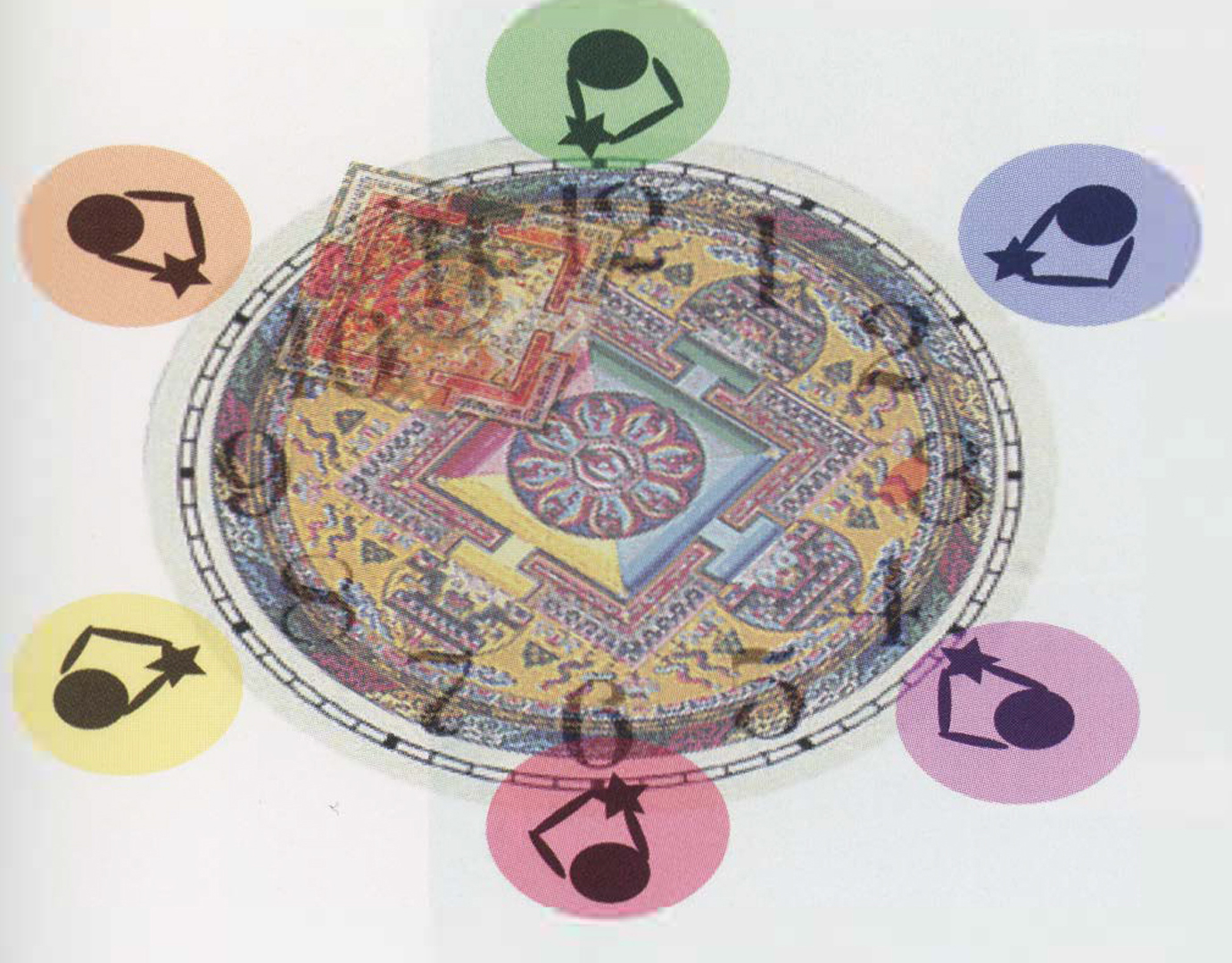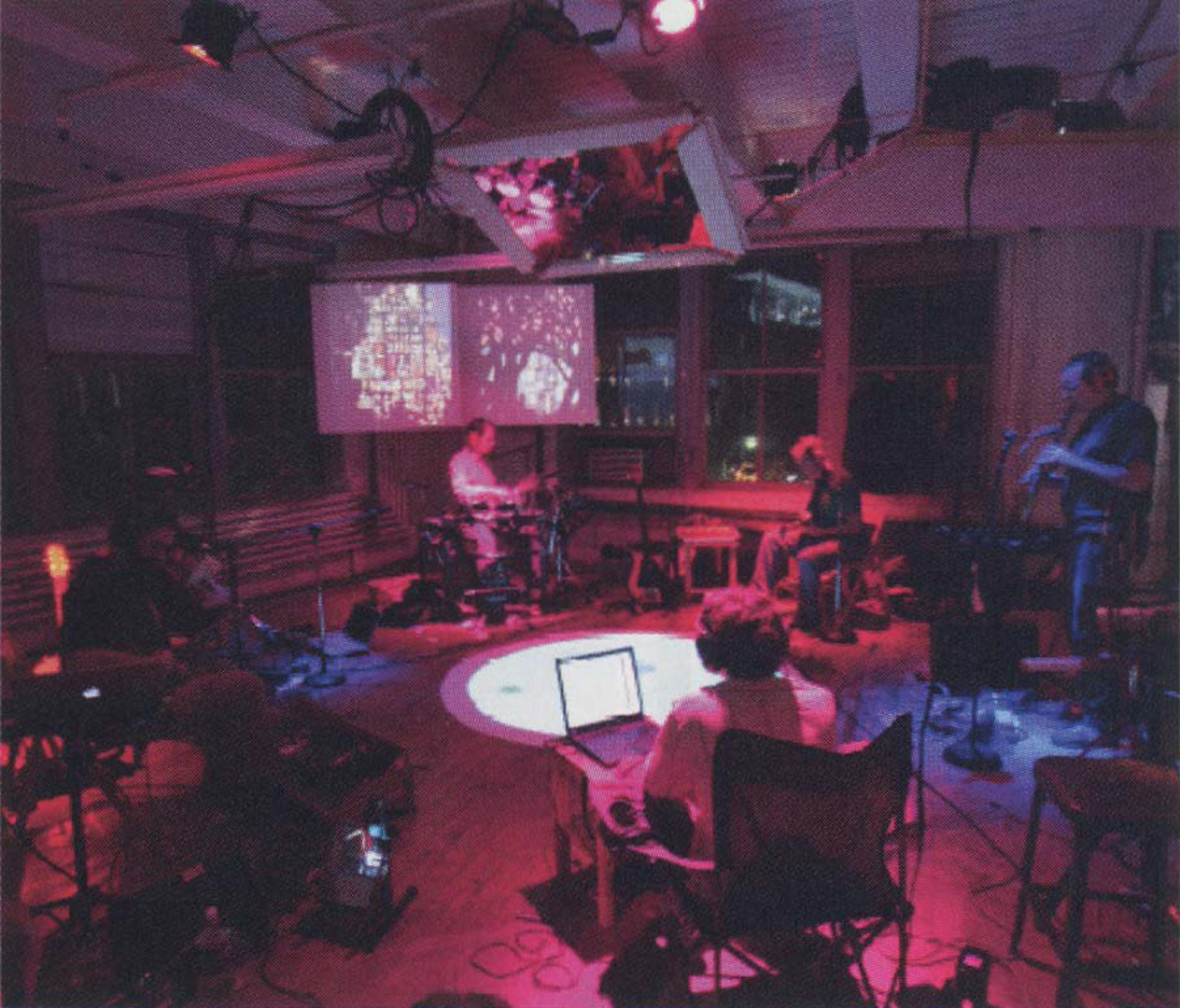Benjamin Vigoda: MANDALA
Artist(s):
Collaborators:
Title:
- MANDALA
Exhibition:
Medium:
- Musical improvisation mediated by computer graphics
Category:
Artist Statement:
Computers have enabled widespread changes in how music is created and shared, but in the area of musical notation, innovation has been mainly limited to improvements in the ability to edit conventional sheet music. MANDALA is an animated graphical language for guiding improvisation, an electronically mediated game piece, drawing inspiration from the musical and theatrical game pieces of artists such as John Zorn, Viola Spolin, and Del Close. The piece seeks to provide an architecture for musical expression that simultaneously allows for both emotional spontaneity and formal satisfaction.
In the earliest Inda-European religions, “mandala” was the term for a chapter or collection of mantras or chanted hymns. Today, the word more commonly refers to visual artworks with ceremonial and spiritual significance in the Tibetan Buddhist tradition, often composed by multiple monks/artists working simultaneously. Similarly, MANDALA seeks to create a spatial/temporal structure for guiding collaborative creativity. To compose with MANDALA, we write algorithms that encode a grammar for a set of allowed intermusician interactions or activities. The instruments employed by the musicians must be flexible enough to allow each musician to play various roles that are proposed to them during the piece. The players gather around a circle of light. Within this circle, are many smaller circles of light in varying sizes and colors. Ornamented, translucent, spinning, these images communicate the structure of a particular musical piece to the participants while simultaneously creating a syn-aesthetic theater space for the music.
Technical Information:
MANDALA employs a video projector and Mitsubishi DiamondTouch table to provide an interactive musical notation that all of the musicians can see and interact with simultaneously. The DiamondTouch table multiplexes the rows and columns of its surface with a signal that is capacitively sensed by individual receivers in each musician’s seat, enabling multi-user, multi-hand touch position tracking.
The MANDALA grammar is composed of a number of graphical elements representing instructions to the musicians. For example, if a MANDALA icon is approaching you, prepare to begin playing abruptly when it reaches your place setting. Similarly, you must abruptly stop when your MANDALA icon returns to the center of the table. Fade in and fade out of a MANDALA icon represent crescendo and decrescendo, respectively.
Each MANDALA icon may also present information (traditional notation, text, a countdown timer, visual imagery, etc.) suggesting an activity to a musician. An arrow from one MANDALA icon to another represents temporal dependence and therefore indicates leadership and supporting roles. We have found that a satisfying MANDALA piece tends to involve most musicians in both following and leading roles, often at the same time. More generally, we have found that many social interactions in music or violations thereof can be encoded by the presence or absence of various rules in a MANDALA composition.






